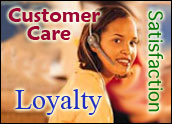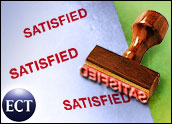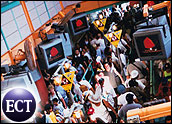
Companies allocate significant resources to customer satisfaction measurement and improvement.
Wayne Hoyer, chairman of the marketing department at University of Texas-Austin’s McCombs School of Business, says satisfaction with product or service quality has a strong and positive impact on customers’ willingness to pay. In fact, the longer customers have been satisfied with a brand or its maker, the more they’ll pay, his research has shown.
Airlines have become geniuses at identifying their best customers and charging them according to their demonstrated satisfaction. Through interpersonal telemarketing sales, segmented e-mails or online promotions, satisfied fliers pay higher prices because they receive exclusive treatment — personalized communications, airport perks, pre-boarding and premium seating.
However, at the other end of the spectrum, there are customers who don’t deserve the infinite yeses marketers have been trained to speak, and no attempt is worth trying to delight them. They inevitably end up costing more to serve than they deliver in profits. This is a consideration today’s marketers sometimes neglect, Hoyer says. Instead they throw money at any effort to improve any customer’s satisfaction.
Behind the Scenes
Customers seek equity with product and service providers. If they feel that they’ve paid a price that equals the quality they’ve received, all is right with the marketplace. However, if the quality of their purchase is at an extreme — less than or greater than they expected it to be — customers feel motivated to regain balance in the buyer-seller equation, Hoyer says. They’ll do this by adjusting their consumption levels or seeking another partner that offers an equitable exchange.
Given this relational complexity, Hoyer suggests that marketers overlay price-sensitivity reads with customer behavior.
“Look at behavior and attitudes,” agrees Aldy Keene, partner at Customer Loyalty Research Center, Indianapolis. Customers’ price sensitivity, for instance, helps marketers judge how much value individuals attach to a brand. With these baseline measures, marketers looking to charge their most pleased customers more, next need to calculate the gap between the value these customers attach to their brand and the next closest competitor. “You want to find the strength of the customer relationship in a way that’s linked to profitability,” he says.
In order to charge extremely satisfied customers more, marketers need to spend money to rachet their satisfaction to a sustainable high. In other words, “they have to work really hard to get the payoff, and it’s going to be expensive,” Hoyer adds.
This is only worth the trouble when that spending is less than potential profit gains. Spending on brand — to communicate a brand as a builder of the buyer’s self-image, for instance, as Marlboro does with its cowboy — may be worth the effort in some cases and not in others. Marlboro can charge more than other cigarette brands, but its success has come with much consideration and measured marketing investment, often at Times Square prices.
DING!
Southwest Airlines recently introduced DING!, a free program that sends audible electronic notices to a consumer’s desktop. Today’s dinged fares typically undercut Southwest’s published fares. But industry analysts and other carriers looking into similar services say some, especially those hitting satisfied business travelers, will raise prices based on the convenience and timely consideration (something road warriors will appreciate) of the delivery.
Custom fares fill unsold seats efficiently and groom customer segments to their revenue potential.
Until DING!, carriers have used modeling techniques to predict demand, then released unsold tickets to third-party sellers that collected a fee for every transaction. Southwest (and competitors that surely will follow it) keeps communication direct between the carrier and the customer. It also pulls in personal information about passengers. With this information the airlines can build better predictive models for ticket sales as well as understand what extra value to bundle with their services in order to maximize profit margins among extremely satisfied customers.
Desperate for Differentiation?
“It is increasingly more difficult in today’s environment to get any kind of differentiation,” Hoyer says. If anything can achieve it, however, branding combined with a unique product or service bundle can. Southwest has the first-mover advantage with DING! It’s easy to see that consumers might lose their patience with customized air fares if all carriers employ desktop widgets, going off here and there with special price notices.
For marketers charged with pricing, any push to reduce discounting by the sales team, encourage stronger customer relationships or simply support reliable increased revenues needs to evolve. “Brand managers set prices depending on product quality,” Hoyer says and suggests that those brand managers look at consumer reaction to product quality to more accurately forecast profit potential, market growth and bottom-line sales.























































Social CRM
See all Social CRM